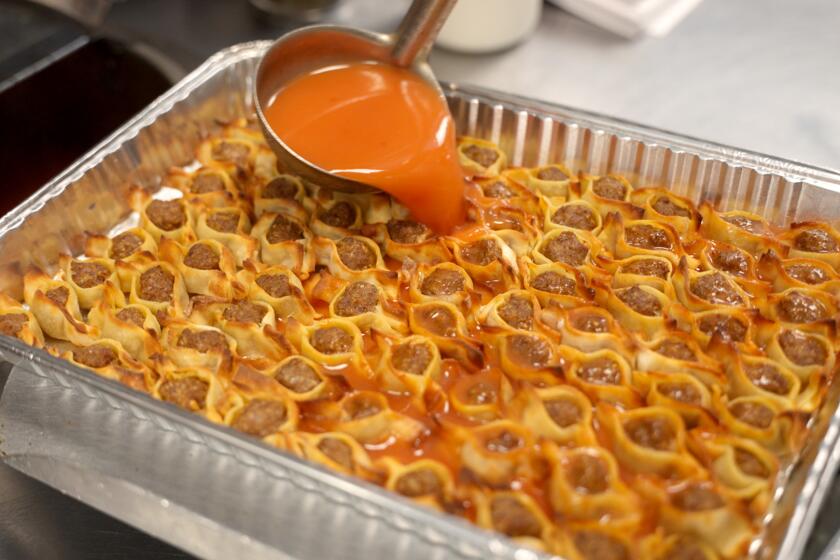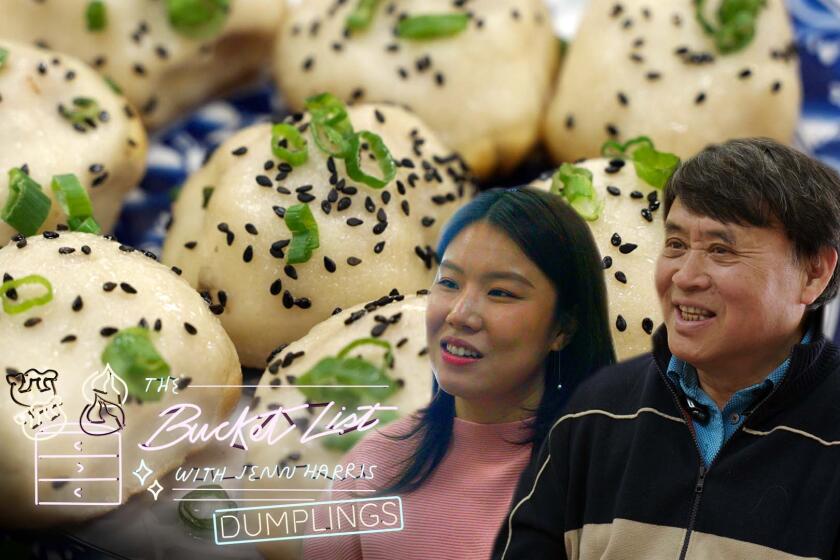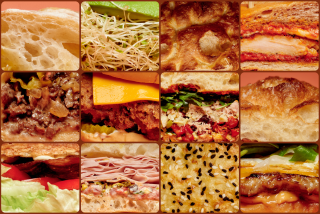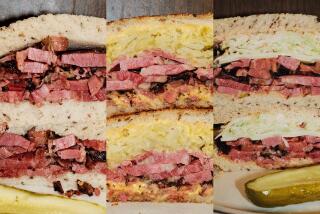Ditch your pumpkin spice latte and warm up with dizi instead
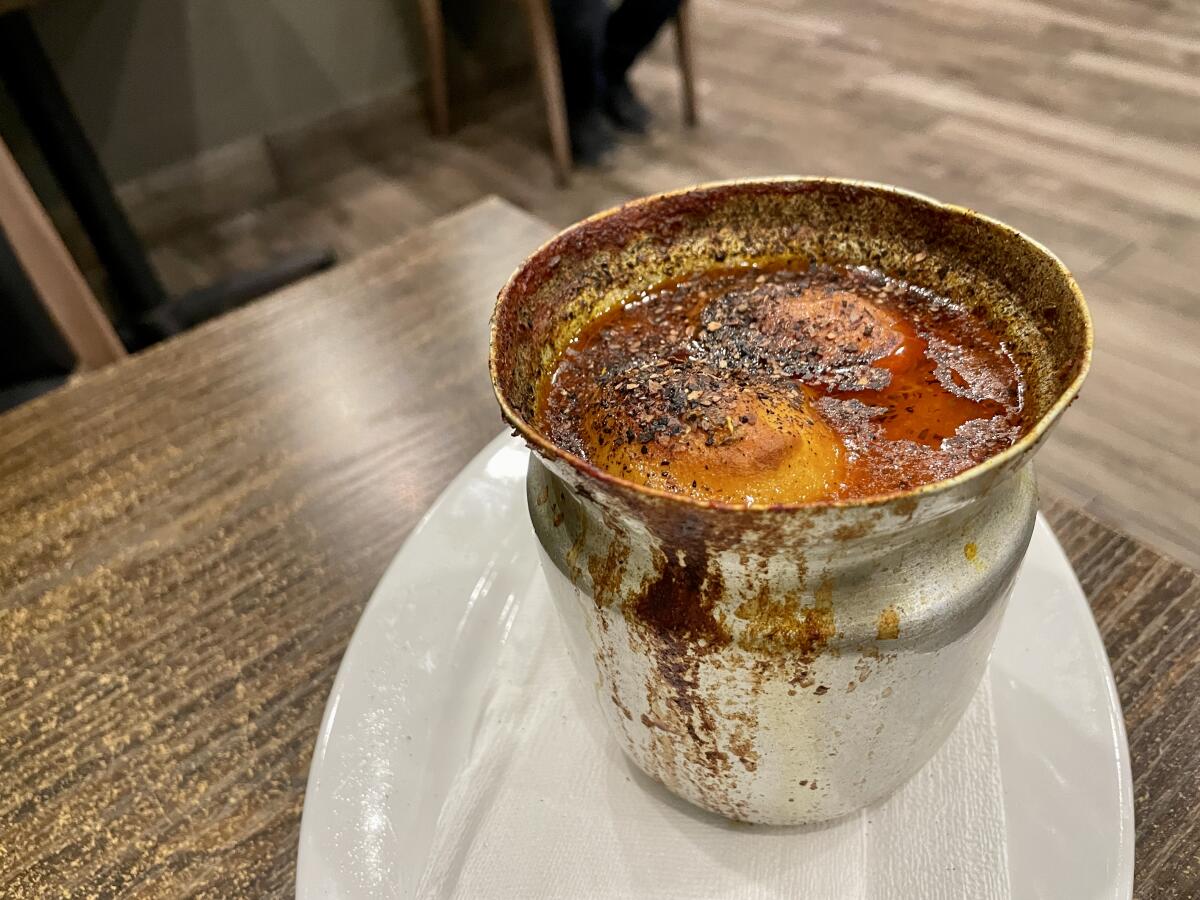
I will never understand the pumpkin spice craze, or the need to associate a season with a specific flavor. I enjoy cinnamon, ginger, nutmeg and clove separately and in my pumpkin pie. I donât need it in a latte, Spam or Cheerios. This week, I have a better recommendation for a dish that will warm you from the inside. This is the food you should think of when someone says pumpkin spice season. And, itâs good year-round. Plus, what could be the best tuna sandwich in the universe.
Dizi from Nersses Vanak
When the weather app predicts rain and the temperature dips, Romik Abediyan gets nervous. The owner of Nersses Vanak knows that his small restaurant, tucked into the corner of a narrow strip mall in Glendale, is one of the only places around town to find dizi. And when itâs cold outside, the Iranian lamb and chickpea stew is what youâll want to be eating.
âWe usually run out,â he says. âWe can only make so many, and my father is the only one who does it.â
Abediyanâs father makes his dizi by cooking lamb, chickpeas, white beans, potato, tomato and onion with a little bit of water and a pinch of turmeric, for hours. The juices from the meat and the vegetables leach out and combine with the cooking liquid to create the base for the stew. While it bubbles away, the gaminess of the lamb mellows and melts into the sweet tomato.
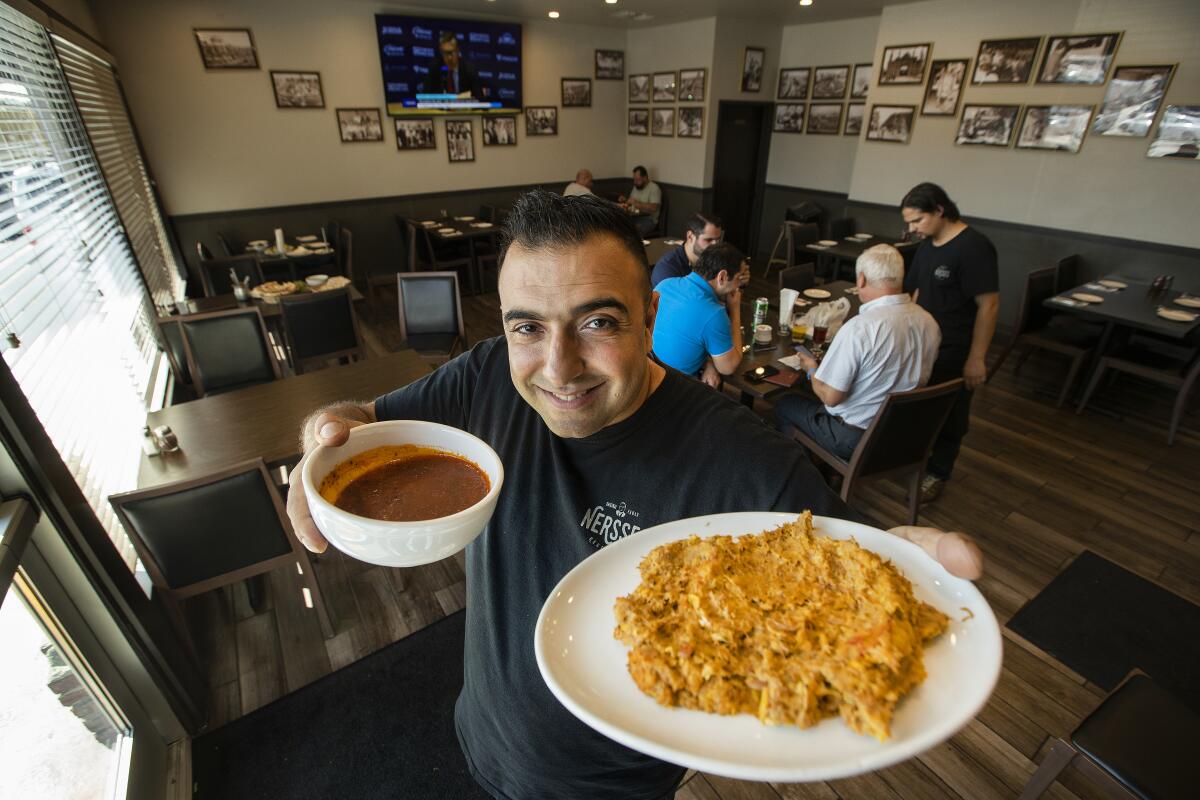
Abediyan says the name comes from the small vessel the soup is cooked in. At Nersses Vanak, he uses petite metal bowls that look like miniature pitchers or vases. If someone prepares a larger pot, he says, the dish is called abgoosht.
âOriginally it comes from Iran, and itâs for people with hard labor jobs,â he says. âItâs a recipe thatâs hundreds of years old and we learned it from my grandfather.â
Abediyanâs family ran a restaurant in Tehran for almost 60 years, and dizi was one of the specialties.
When you order, the server will ask if youâd like to prepare the stew yourself, or have it prepared for you in the kitchen. Ask to do it yourself. Thereâs a certain level of ceremony involved in the serving and preparation that will help keep you warm and engage everyone at the table. And donât forget to ask for an order of torshi (tart, pickled vegetables), too.
On this episode of âThe Bucket List: Dumplings,â we visited the Monta Factory in Glendale, where the Yegiazaryan family is on a mission to make manta dumplings a household name.
The stew arrives in the metal bowl it was cooked in, with a rim stained red by the broth and a smattering of dried herbs. On the side is a meat smasher that looks like a cross between a tiny metal plunger and Thorâs hammer, slabs of warm, blistered flatbread and an empty bowl. Use a napkin or a piece of bread to grasp the neck of the pitcher (it will be very hot) and pour the soup into the bowl, making sure to reserve the chunks of potato and lamb bobbing around in the liquid. Then take the smasher and use it to pummel the remaining meat and vegetables until a thick paste forms. Donât worry, if you look like youâre struggling, your server will take over, aggressively swirling the smasher around to make the paste. Youâll need to put some muscle into it and you can ask your fellow dining companions to help.
Once the paste is a thick mash, you can scoop some into your bowl, or make wraps with the provided flatbread and fresh herbs. I like to put dollops of the stuff into my hot soup and eat it like lumpy meat and bean dumplings. And once Iâve finished, add in torn pieces of the flatbread to make chewy, stew-soaked croutons.
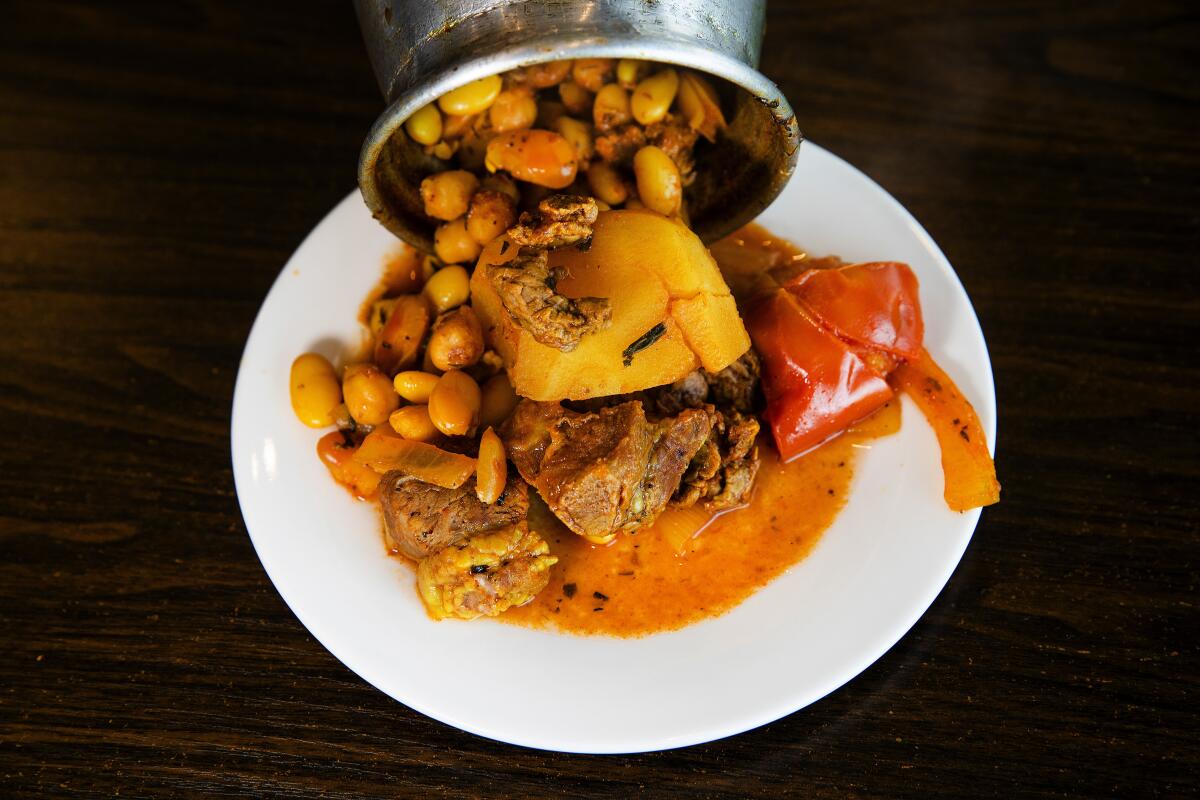
âSome people copy us, but they donât really do it,â Abediyan says. âWe are one of the best on this, I can tell you that. I never say Iâm good, but we are good on dizi.â
If youâre not planning to build out your meal with plates of kebabs, order one dizi per person and choose your own stew adventure.
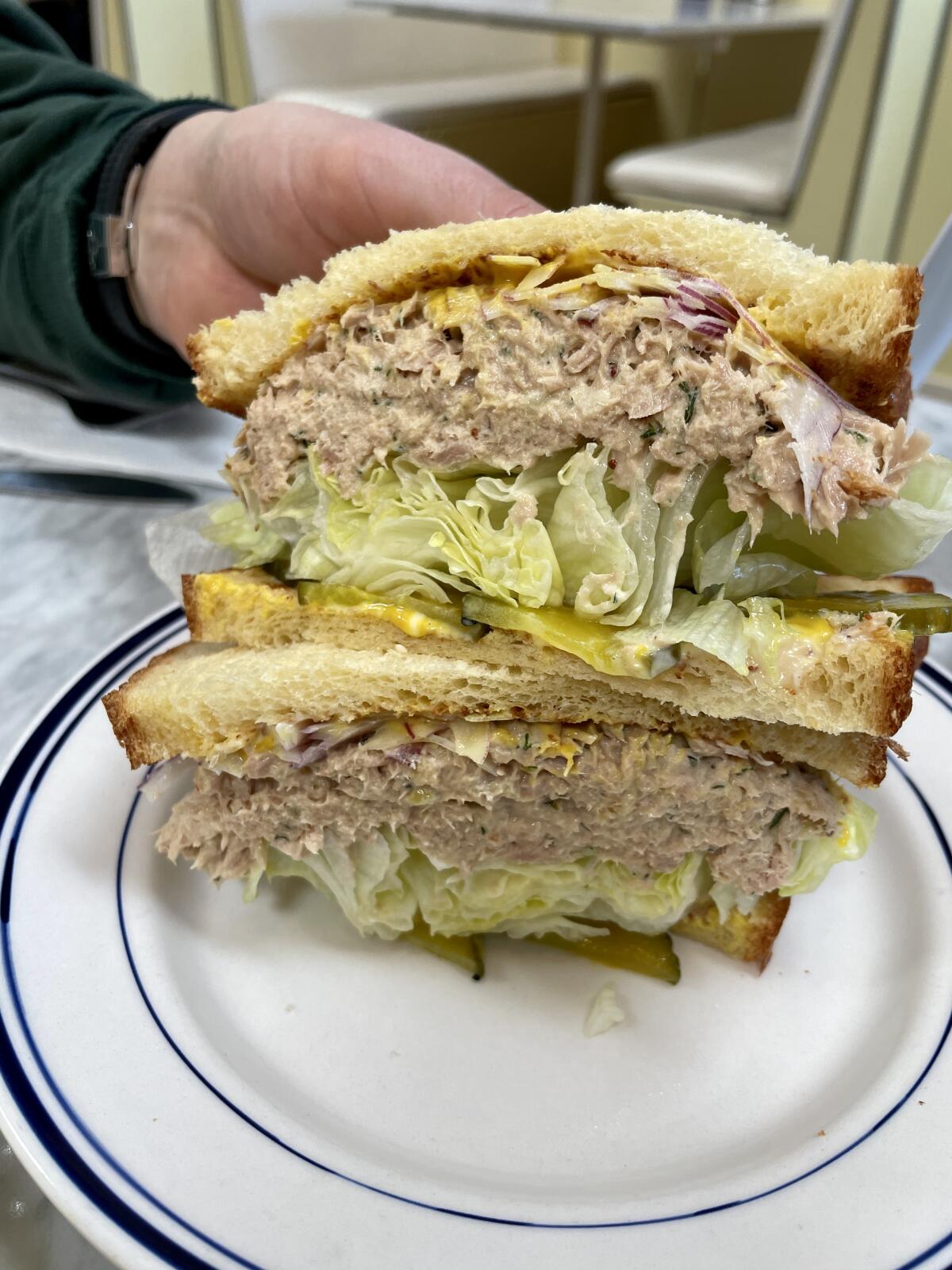
Tuna sandwich from Bub and Grandmaâs
Thereâs plenty to ogle over at the new Bub and Grandmaâs restaurant in Glassell Park. The bakery case is stocked with doughnuts, croissants, muffins, pie, cake and cookies. The open kitchen offers a front-row seat to all the sandwiches, and there are many: Roasted cauliflower and cheddar with jammy balsamic onions, brisket with apple mostarda, and roast beef and cheddar, dripping with au jus. On a recent visit with friends, we slid into a booth and ordered nearly one of everything. Iâd be happy to repeat it all, but my heart belongs to the tuna salad.
Itâs often the lunchtime workhorse. Wrapped in plastic film and thrown into lunch boxes and office fridges around the country, itâs dependable and filling. You eat it, then forget it. Owner Andy Kadin and chef Zach Jarrett want you to remember their tuna sandwich.
âI realized as I was developing the sandwich, people have strong opinions on tuna,â Jarrett said during a recent call. âEverybodyâs tuna salad is their tuna salad.â
My usual involves draining the tuna really well, shredding it until it resembles sawdust, then adding copious amounts of mayo, diced dill pickles and red onion. My dad likes extra mayonnaise on his bread. My mother sometimes subs her mayo for mashed avocado and adds extra sweet pickles. I bet you have a go-to variation, too.
Kadin and Jarrett were inspired by what they describe as âthe quintessentially perfect tuna sandwichâ from Palace diner, a restaurant about 15 minutes outside of Portland, Maine, where the sandwich comes with a wedge of iceberg lettuce.
On this weekâs episode of âThe Bucket List: Dumplings,â we visit Kang Kang Food Court to learn how to make sheng jian bao, then we head into our Los Angeles Times kitchen with dumpling chef and expert Britney Wang.
âWe spent a lot of time obsessively worrying about it,â Jarrett said. âThat, and everything else,â Kadin added.
The base of the salad itself is oil-packed tuna, drained and mixed with mayonnaise, housemade sweet pickles, chopped celery and pepperoncini. The sandwich is built on unbraided challah that lead baker Christopher Lier makes in old milk bread tins. Itâs soft, squishy and eggy, everything a good challah aspires to be.
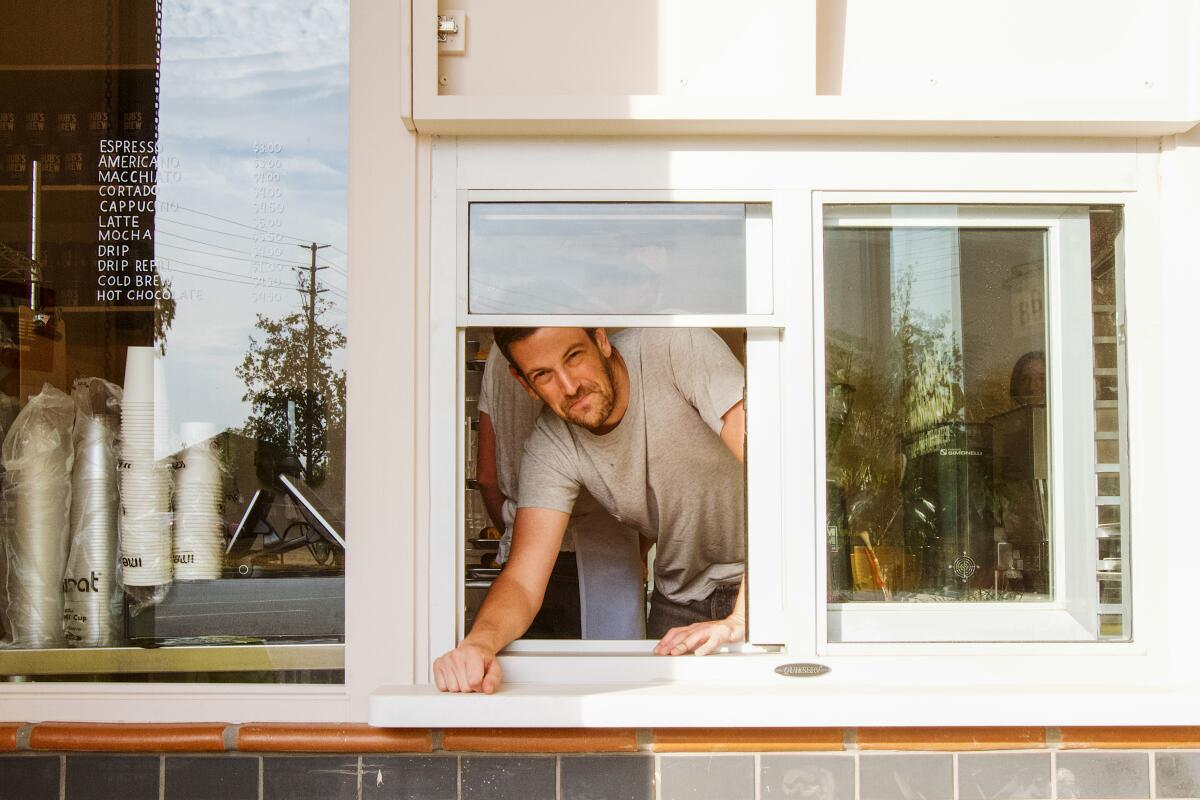
The sandwich has the exaggerated height of a classic, stacked deli sandwich, thanks to an extra large wedge of iceberg in the center and a mound of tuna salad. Itâs the sort of sandwich you give a good squeeze to encourage the proper distribution of ingredients to all the corners and edges. There are slivers of red onion and more of the sliced sweet pickles featured in the tuna salad. Both halves of the challah are spread with mayonnaise and yellow mustard, an addition that borders on the heretical depending on whom you ask. I think it makes the sandwich.
âThat combo of lettuce and yellow mustard triggered a specific taste memory the way American cheese has an irreplaceable void,â Jarrett said. âItâs just correct.â
That first bite unleashes a flood of nostalgia: school lunches on the playground, beach picnics with packed coolers and quick rainy-day sandwiches prepared by my mother. Jarrett toasts just one side of the bread and serves it on the inside, so you get that first bite of soft, pillowy bread, then a satisfying crunch.
I took half home to eat the next day. The wedge stayed intact and the bread wasnât soggy. It was a tuna sandwich to remember.
Restaurants mentioned in this article
6524 San Fernando Road, Glendale, (818) 550-7800, nersses.com
3507 Eagle Rock Blvd., Los Angeles, bubandgrandmas.com/restaurant
More to Read
Eat your way across L.A.
Get our weekly Tasting Notes newsletter for reviews, news and more.
You may occasionally receive promotional content from the Los Angeles Times.
